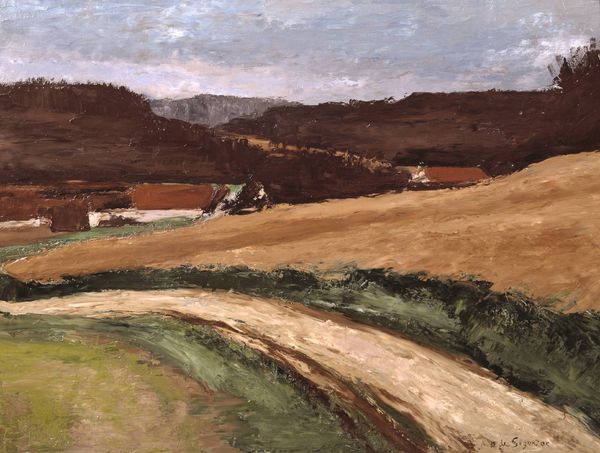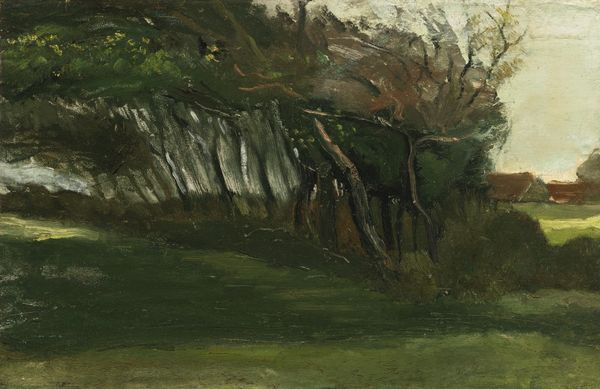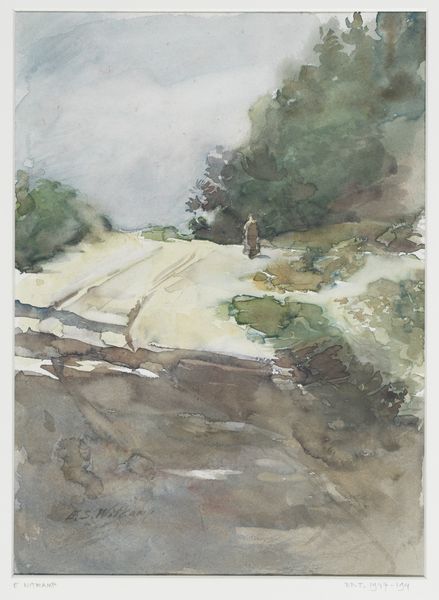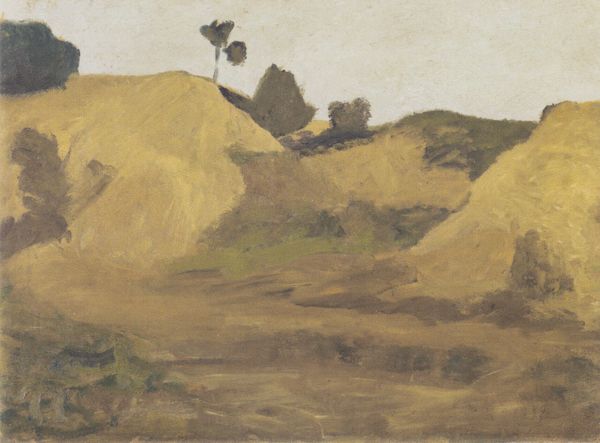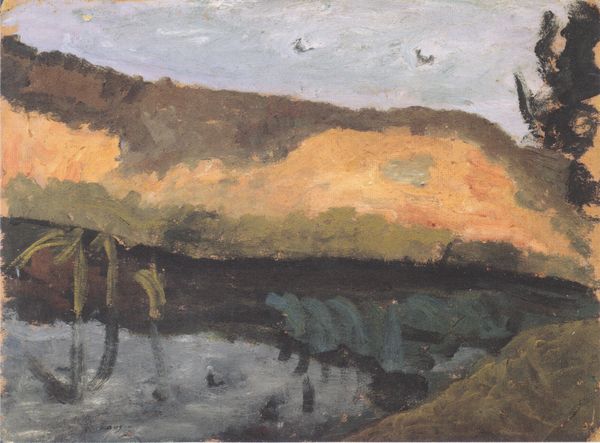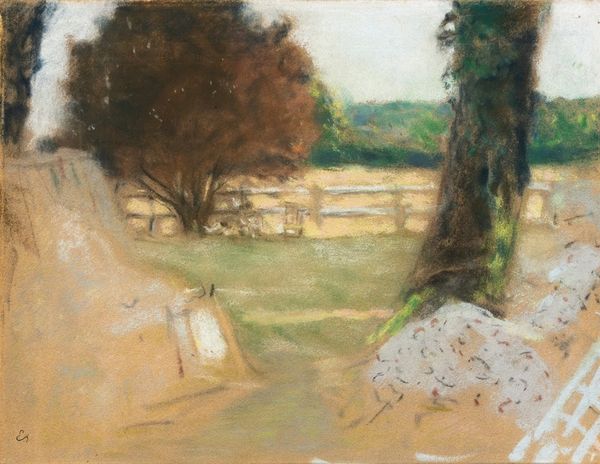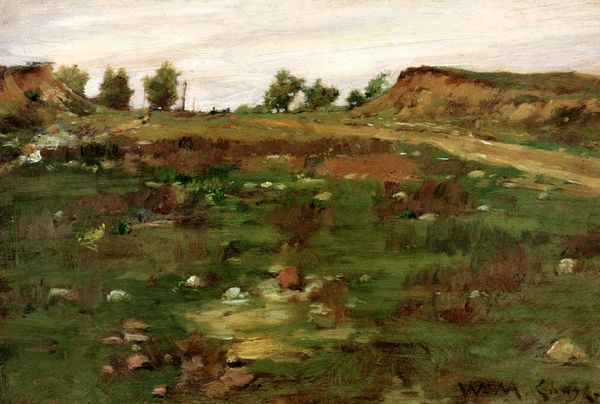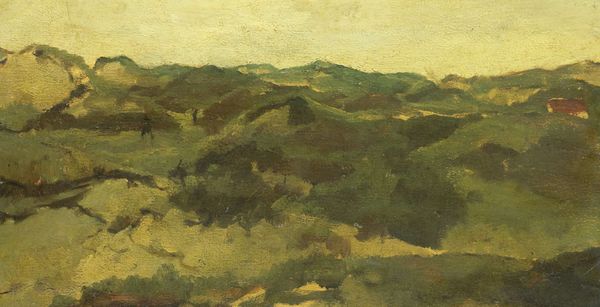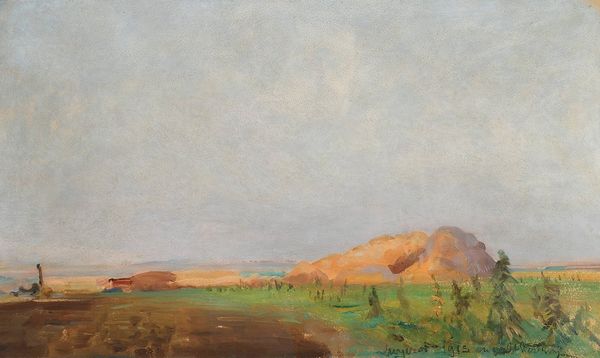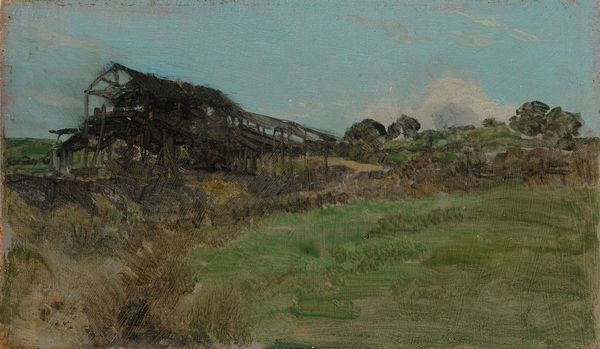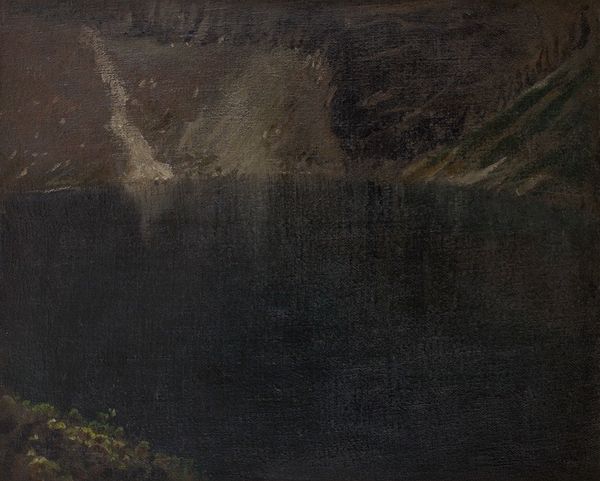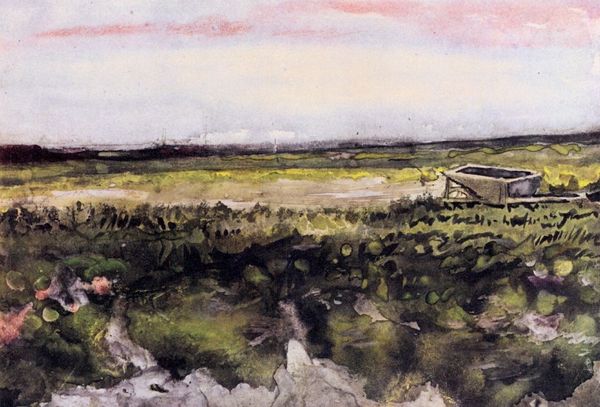
painting, plein-air, oil-paint
#
painting
#
impressionism
#
plein-air
#
oil-paint
#
landscape
#
impressionist landscape
#
oil painting
#
modernism
Copyright: Public domain
Editor: Here we have Theodore Robinson’s "Valley of the Seine, Giverny" from 1887, an oil painting done en plein-air. I’m struck by how the almost abstract, vertical lines create this flattened perspective, like a tapestry. What do you see in this piece? Curator: I see a complex interplay of class, labor, and the evolving relationship between humanity and nature. Robinson, as an American Impressionist, engages with similar themes as his European counterparts, but his perspective is uniquely informed by the American experience. Notice the figure, perhaps a peasant, interacting with the land. Consider how this scene idealizes rural life while subtly obscuring the often harsh realities of agricultural labor and land ownership during this period. How might this romanticized view of rural life reinforce certain power structures? Editor: That’s fascinating. I hadn’t considered the political dimensions of what seemed like a peaceful landscape. Curator: Think about the artistic movements of the time, Impressionism embraced modernity, often depicting scenes of leisure and progress. However, it can also inadvertently erase the social struggles of the working class. What’s visible, and perhaps more importantly, what is *not* visible in this scene? Editor: So, by focusing on the aesthetic beauty, he might be overlooking some of the underlying societal issues? Curator: Exactly. And remember, Robinson, as a relatively privileged artist, views this landscape through a specific lens. How might his positionality affect his interpretation and representation of the scene? Is he truly capturing the lived experience of the people connected to this landscape? Editor: I see, it’s not just about what is painted but who is doing the painting and from what perspective. It changes how I see the painting entirely! Curator: Precisely. It prompts us to question whose stories are being told, and whose are being left out of the frame.
Comments
No comments
Be the first to comment and join the conversation on the ultimate creative platform.
